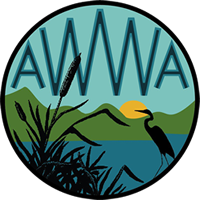Welcome to our latest series of blog posts! We will periodically update our blog with what’s happening in the 4th grade classrooms in Wakefield, NH, as they partake in an environmental and educational endeavor.
Yesterday was an exciting day at the Paul School. The room was buzzing as three 4th grade classes looked at me with inquisitive eyes. What could possibly be in the cooler? Could it be more than one? The students had a variety of guesses as to what creature(s) would be living in their classroom. With a tank set up in the corner, imaginations had a week to run wild, as the possibility of having a turtle, a shark, or even a penguin was still plausible. Luckily, the anticipation was almost over, as the big reveal was imminent. Soon, the students would find out what would be living in that tank.

As a jar emerged from the cooler, a chorus of “Eggs!” rang out, and this time the students were right. The excitement in the room was infectious as they learned about their upcoming months with their….drum roll… brook trout eggs! Eggs were passed around in clear cups so students could examine them closer with magnifying glasses. It’s great to see such enthusiasm in this group of students!

Students will track daily development as they experience brook trout evolve from egg to fry. Over the coming months they will learn about anatomy, water quality, habitat, food webs and much more. Because trout development is temperature dependent, daily tracking is necessary to determine life cycle stages. The warmer the water, the quicker they develop, and our goal is to keep the tank at a range of 35° – 38°F. Development is measured using the Brook Trout Developmental Index Chart.
| Brook Trout Developmental Index | ||||||||||
| Temp F | 0 | 0.1 | 0.2 | 0.3 | 0.4 | 0.5 | 0.6 | 0.7 | 0.8 | 0.9 |
| 35 | 0.41 | 0.416 | 0.422 | 0.428 | 0.434 | 0.441 | 0.447 | 0.453 | 0.459 | 0.465 |
| 36 | 0.471 | 0.477 | 0.483 | 0.489 | 0.495 | 0.502 | 0.508 | 0.514 | 0.52 | 0.526 |
| 37 | 0.532 | 0.538 | 0.544 | 0.55 | 0.556 | 0.562 | 0.568 | 0.574 | 0.58 | 0.586 |
| 38 | 0.592 | 0.598 | 0.604 | 0.61 | 0.616 | 0.623 | 0.629 | 0.635 | 0.641 | 0.647 |
| 39 | 0.653 | 0.659 | 0.665 | 0.671 | 0.677 | 0.684 | 0.69 | 0.696 | 0.702 | 0.708 |
| 40 | 0.714 | 0.722 | 0.729 | 0.737 | 0.745 | 0.753 | 0.76 | 0.768 | 0.776 | 0.783 |
How to use the chart:
- The left hand column is temperature in Fahrenheit; 35, 36, 37, etc.
- The row across the top is tenths of degrees (the decimal); 35.3, 36.4, 37.5, etc.
- The decimal figures found at the intersection of the left hand column and the row across the top represent how much the eggs developed at a certain temperature.
- The goal is to have a cumulative total of all the daily development percentages.
Example:
- At 35.1°F, the eggs have developed 0.416% for that day at that temperature.
- At 35.2°F, the eggs have developed 0.422% for that day at that temperature.
Total development = 0.838%
Development Stages:
- Weakly eyed 29%
- Shocking 38-42%
- Strongly eyed 47% (Our eggs are currently at this stage; approx. 52% developed)
- Hatched 73%
- Swim up 100%
Schools all across New Hampshire are participating in the Trout in the Classroom program, which is facilitated by the New Hampshire Fish and Game Department and in partnership with Trout Unlimited. Our eggs were provided by the Powder Mill Fish Hatchery in New Durham.


Schools all across New Hampshire are participating in the Trout in the Classroom program, which is facilitated by the New Hampshire Fish and Game Department and in partnership with Trout Unlimited. Our eggs were provided by the Powder Mill Fish Hatchery in New Durham.
Check back in with our blog as the Paul School 4th graders partake in this awesome educational experience!

